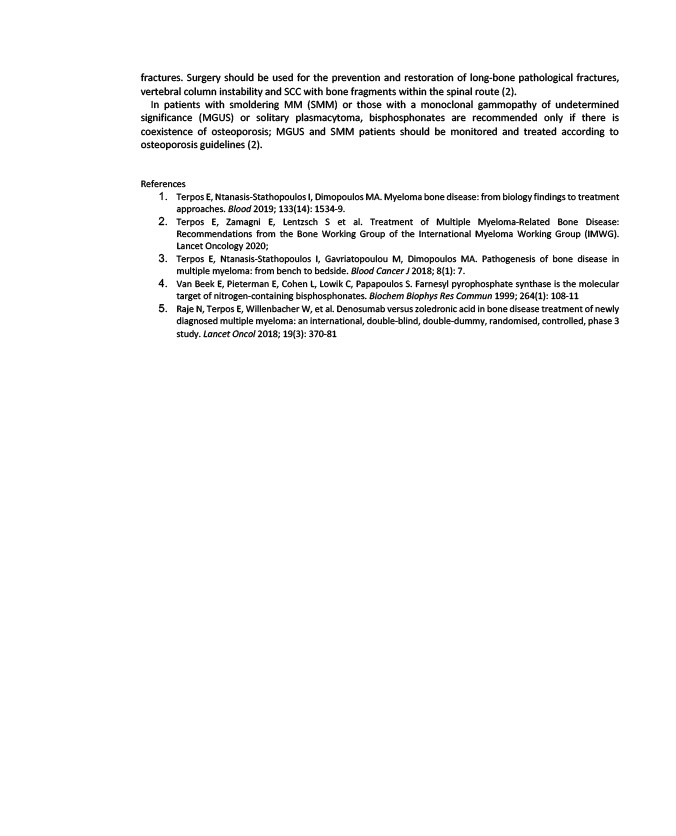
fractures. Surgery should be used for the prevention and restoration of long-bone pathological fractures,
vertebral column instability and SCC with bone fragments within the spinal route (2).
In patients with smoldering MM (SMM) or those with a monoclonal gammopathy of undetermined
significance (MGUS) or solitary plasmacytoma, bisphosphonates are recommended only if there is
coexistence of osteoporosis; MGUS and SMM patients should be monitored and treated according to
osteoporosis guidelines (2).
References
1. Terpos E, Ntanasis-Stathopoulos I, Dimopoulos MA. Myeloma bone disease: from biology findings to treatment
approaches. Blood 2019; 133(14): 1534-9.
2. Terpos E, Zamagni E, Lentzsch S et al. Treatment of Multiple Myeloma-Related Bone Disease:
Recommendations from the Bone Working Group of the International Myeloma Working Group (IMWG).
Lancet Oncology 2020;
3. Terpos E, Ntanasis-Stathopoulos I, Gavriatopoulou M, Dimopoulos MA. Pathogenesis of bone disease in
multiple myeloma: from bench to bedside. Blood Cancer J 2018; 8(1): 7.
4. Van Beek E, Pieterman E, Cohen L, Lowik C, Papapoulos S. Farnesyl pyrophosphate synthase is the molecular
target of nitrogen-containing bisphosphonates. Biochem Biophys Res Commun 1999; 264(1): 108-11
5. Raje N, Terpos E, Willenbacher W, et al. Denosumab versus zoledronic acid in bone disease treatment of newly
diagnosed multiple myeloma: an international, double-blind, double-dummy, randomised, controlled, phase 3
study. Lancet Oncol 2018; 19(3): 370-81